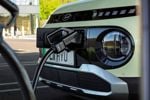The benefits and challenges of running electric vehicles have been shared by fleet decision-makers.
Members of the Fleet200 Executive Club shared their experiences at the November 2019 meeting.
Here is a summary of the views they expressed.
- Leasing works well for electric vehicles over two to four years to enable the fleet to be renewed with the latest (fast-developing) technology.
- However, every individual EV should be evaluated to ensure the right lease length to get the TCO to work.
- Promote your electric vehicles with advertising, support of local events and decals on the vehicles. One fleet invested £100 per vehicle in livery and found it to be excellent value because it promoted and stimulated uptake among its company car drivers.
- Worst case scenario for switching from a diesel van to an electric van is cost neutral; in practice, it’s cost beneficial because of the lower SMR and tyre costs, and fuel savings. Some fleets are seeing leases £100 lower over three years/30,000 miles compared to diesel, but the TCO saving is even greater, even if you pay for the installation of charge points at the employee’s home.
- One fleet fits two meters – one for the home, one for the car. They are also looking at vehicle to grid charging, where they can put work schedules into the charger to prioritise charge for on call drivers etc.
- Sweet spot for vans: get them to return to base empty to maximise the benefit on fuel cost.
- The biggest benefits are in rural areas because the mileage is higher. London might be 10-20 miles per day; rural could be 50-60 miles.
- One issue is availability, especially if you are looking to buy hundreds.
- Another issue is the latest 90kW battery cars – if charging on 7kW home/work chargers they can still be charging 12 hours later.
- Charging needs to be little and often – a bit at home, a bit at work, a bit from public points. It’s realistic with a decent public infrastructure, but one issue is that as EV sales rise, the infrastructure has to stay ahead of the curve. It has to be multiple charge points per location, not just one or two.
- Charge installers need to consider the areas where people spend time, e.g. retail parks, service stations.
- One fleet allows private mileage in the electric van as an added incentive (because of the BIK situation).
- There is some nervousness of RVs. They are strong at present because the volumes are low. Biggest concern is PHEVs, not EVs.
- Fleets report no battery or motor issues on EVs – leasing company SMR charges don’t necessarily reflect this.
- Fleets felt that leasing companies would decide not to de-fleet or dispose of an EV, but keep it and re-lease into the used car market.
- Telematics can help to analyse mileage of drivers, including how often they go further than the range, to determine which ones fit an EV profile.
- The first approach to implementing an EV plan is to ask for volunteers. They will then most likely become the advocates.
- There are still issues with charging – too many cards for each network. It needs to be a debit card, the same as diesel/petrol.
 Join the Fleet200 Executive Club
Join the Fleet200 Executive Club
If you're a fleet decision maker interested in joining the club and attending the final meeting of this year and our meetings in 2020, email emma.bunce@bauermedia.co.uk. Membership is free.
The Fleet200 Executive Club is a group of the most influential fleets operating in the UK.
It produces research on key fleet trends and holds events which bring together the UK’s most professional fleet decision makers to debate the issues of importance to their businesses, share ideas on new initiatives and industry developments, and hear from outstanding, thought-provoking speakers.
The final meeting date of 2019 is:
Tuesday, November 19, Hilton St Anne's, Wokingham RG40 1ST






















Login to comment
Comments
No comments have been made yet.